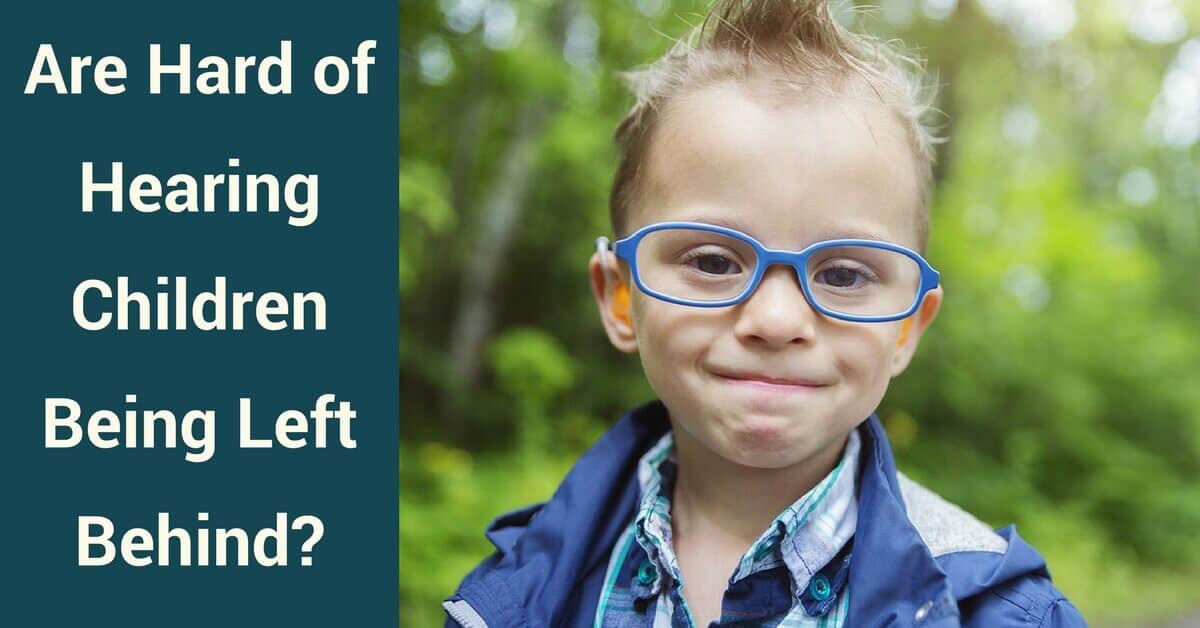A new study has revealed factors which influence language outcomes for children who use hearing aids, with hearing loss ranging from mild to severe. In 1977, a book was published that shed light on the way the needs of children with mild-to-moderate hearing loss are often overlooked. That book was Julia Davis’ important volume: “Our Forgotten Children: Hard of Hearing Pupils in the Schools”. Her findings included the following observations:
-Teachers rarely received training to work with hard of hearing students.
-Amplification devices worn by children, such as hearing aids, were rarely monitored.
-Research on these students and their learning outcomes was very limited.
Though decades have passed since Davis’ study, many of these issues remain. In 2006, a panel held by the National Institute on Deafness and Other Communication Disorders (NIDCD) found that there were still troubling gaps in the literature relating to children with hearing problems. The NIDCD stated the need for studies to find out how hearing aids influence outcomes for these children, in addition to other fundamental questions. The need for research was particularly pressing in the era of newborn hearing screenings, with many children having access to early intervention such as hearing aids.
The ASHA study and its findings
In light of the urgent need for more research, The American Speech-Language-Hearing Association set out to find out as much as they could about academic outcomes for hard of hearing children who wear hearing aids. The study was specifically designed to examine the language and auditory outcomes of infants and preschool-age children with permanent, bilateral, mild-to-severe hearing loss, and to identify factors that play a part in these outcomes.
In 2008, they joined forces with the University of Iowa, Boys Town National Research Hospital and University of North Carolina at Chapel Hill to start a prospective, longitudinal study, following 317 children who are hard of hearing and 117 hearing children, of similar age and socioeconomic status. The project, called Outcomes of Children with Hearing Loss (OCHL), is ongoing and is led by J. Bruce Tomblin and Mary Pat Moeller. The results of the first five years of the study were published in a supplement volume of Ear and Hearing in 2015. Click here if you like to read the published findings in full.
In the first five years of the study, researchers found that:
- Hard of hearing children are at risk for language delays–and the risk increases with the severity of hearing loss.
- Hard of hearing children performed one standard deviation below the control group on language measures, though they were within the average to low-average range compared to standard test results.
- Well-fitted hearing aids protect against developmental delays in hard of hearing children; however, more than half of the children’s hearing aids were not fitted optimally.
- Hearing aids not being fitted optimally resulted in reduced audibility, speech perception and language outcomes.
These results suggest the vital need for hearing aid validation and verification practices, which have been shown to directly affect children’s learning outcomes.
What is the reason for speech and language delays?
In the study, hard of hearing children who wear hearing aids were found to have speech and language delays. Why is this so?
The ASHA researchers concluded that children with hearing loss are at risk for these delays due to limitations in their access to linguistic input, which lead to a decrease in their uptake of language exposure. In other words, when their access to language is inconsistent, the less language they hear, and the less they are able to absorb and reproduce.
There were three main factors that were found to influence the children’s linguistic access:
- Better audibility (the ability to hear speech) provided by hearing aids. Children with better-functioning and well-fitted hearing aids showed stronger language growth in preschool than those with lower audibility.
- Duration and consistency of hearing aid use. The children with the best language outcomes were those who wore their hearing aids regularly (more than 10 hours a day) and had their aids fitted early (younger than 6 months old). However, those who were fitted with hearing aids later did show a pattern of catching up with their peers.
- Quality of language heard by child in the home. The language parents used for speaking to children with hearing loss was found to be less abstract and more directive-based (“sit down”) than when speaking to children with normal hearing. This was shown to affect language outcome.
As the study is ongoing, the second phase will follow the children in their school years to determine how more complex listening environments and other factors affect their later language, literacy and social outcomes. The results of the study so far support the need for early diagnosis and treatment of hearing loss, as well as the need for more careful monitoring and fitting of hearing aids in infants and children. The authors of the study hope their research will promote changes in practice so that these children will no longer fall behind their hearing peers.
Pediatric Hearing Health Care at Desert Valley Audiology
If your child experiences hearing loss, visit us at Desert Valley Audiology today. We provide comprehensive pediatric hearing health care services to ensure optimal access for your child. Our friendly team is here to support your family.

